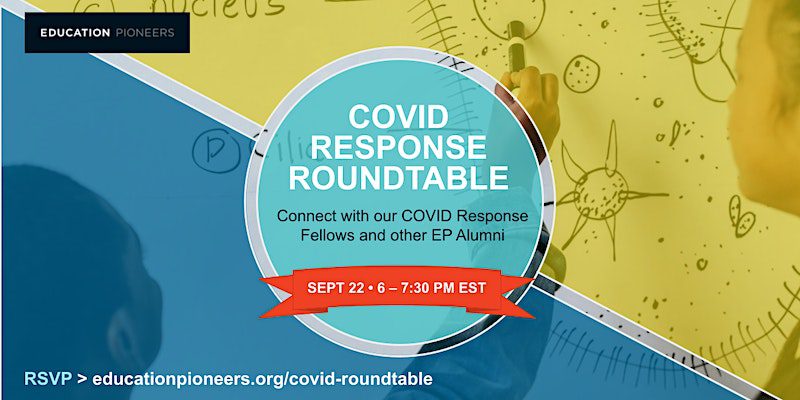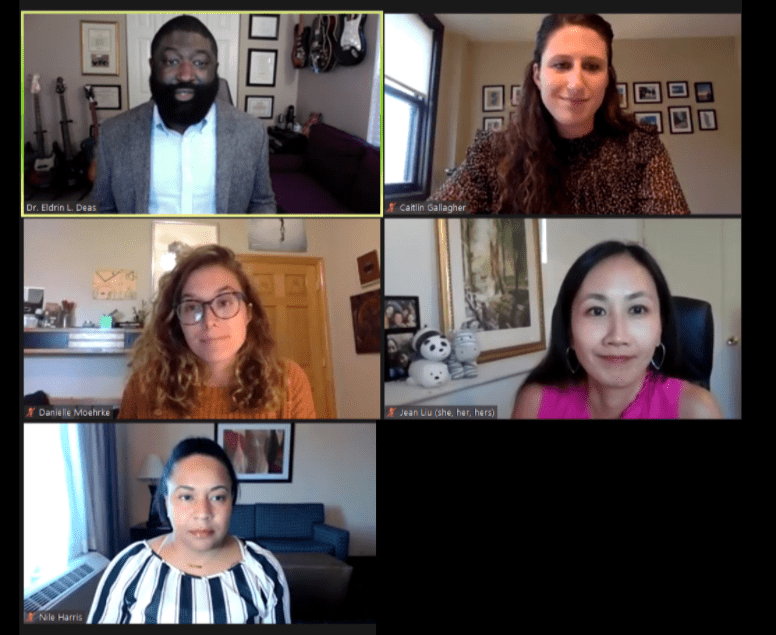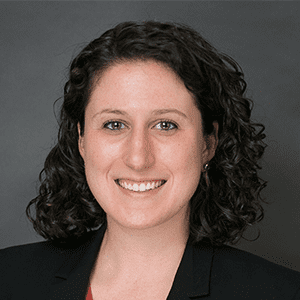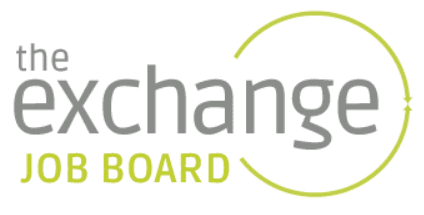
The 2021-2022 school year is in full swing across the country — and while it’s become a national priority to accelerate learning and get students back in the physical classroom as much as possible, it has remained a complicated endeavor in the age of COVID-19. The Delta variant continues to surge, vaccines remain unavailable to children under the age of 12, and communities continue to face different contextual challenges which are impacting the “return” to school.
On the front lines of this effort are EP COVID Response Fellows: 24 leaders who jumped head-first into the K-12 crisis nearly 12 months ago. Reporting directly to senior leaders like superintendents and chiefs, COVID Response Fellows have provided chief of staff-level flexible capacity to tackle school systems’ most pressing pandemic needs.
With the 2020-2021 school year now under their belts, COVID Response Fellows are applying lessons learned to a new school year and another rapidly evolving context. In September, we hosted our second virtual “roundtable” for EP Alumni to hear from Fellows’ reflections on how COVID is reshaping education within their schools, and what lies ahead. The panel was moderated by EP Alum Eldrin Deas (2013). Read the recap of our first roundtable here >>
COVID Response Fellows are leading high-stakes work at school systems of all sizes
 Nile Harris is applying her previous general management and strategy experience in financial services and medical devices to her role as Director of Operations at Clarksdale at Collegiate Public Charter School. At the single-site charter in rural Mississippi Delta, Nile oversees everything from facilities management to student transportation to IT — a wide set of responsibilities that ultimately enables Clarksdale’s 450 students to be safe and learn.
Nile Harris is applying her previous general management and strategy experience in financial services and medical devices to her role as Director of Operations at Clarksdale at Collegiate Public Charter School. At the single-site charter in rural Mississippi Delta, Nile oversees everything from facilities management to student transportation to IT — a wide set of responsibilities that ultimately enables Clarksdale’s 450 students to be safe and learn.  In Detroit, Caitlin Gallagher is the Director of Strategic Initiatives at New Paradigm for Education, a local six-campus network serving 3,000 students. Her role primarily focuses on technology: in her first big project last fall, Caitlin analyzed Chromebook and Wifi access for network families to ensure all students could access virtual learning. She continues to optimize digital systems as a lever for student achievement.
In Detroit, Caitlin Gallagher is the Director of Strategic Initiatives at New Paradigm for Education, a local six-campus network serving 3,000 students. Her role primarily focuses on technology: in her first big project last fall, Caitlin analyzed Chromebook and Wifi access for network families to ensure all students could access virtual learning. She continues to optimize digital systems as a lever for student achievement. Jean Liu’s previous experience as a 2020 Summer Fellow at Oakland Unified School District accelerated her ability to make an impact as OUSD’s COVID Response Fellow. Applying her strategy and planning experience from the private sector, Jean has led critical initiatives like implementing a new parent communication platform that enables parents of OUSD’s 36,000 students to access updates in more than 55 languages.
Jean Liu’s previous experience as a 2020 Summer Fellow at Oakland Unified School District accelerated her ability to make an impact as OUSD’s COVID Response Fellow. Applying her strategy and planning experience from the private sector, Jean has led critical initiatives like implementing a new parent communication platform that enables parents of OUSD’s 36,000 students to access updates in more than 55 languages. At Chicago Public Schools, the nation’s third largest school district, Danielle Moehrke manages COVID testing operations for CPS’ 40,000 staff and 340,000 students and families — a massive operation that she’s scaled since the beginning of 2021.
At Chicago Public Schools, the nation’s third largest school district, Danielle Moehrke manages COVID testing operations for CPS’ 40,000 staff and 340,000 students and families — a massive operation that she’s scaled since the beginning of 2021.
Fellows’ work is often behind the scenes, but has far-reaching consequences and impact.
- “I can’t think of anyone affiliated with CPS that is not touched by our COVID testing program,” reflects Danielle. Even families that aren’t being tested directly by asymptomatic testing, for example, have kids in schools and would be affected by an outbreak. “It ripples out into the larger community, and illustrates that it’s high-stakes work from a public health perspective.”
- Nile sees an outsize role that smooth school operations play in their rural community. “It’s a tight-knit community. Families rely on us to get their students to and from the school building, to get them food, to get them Chromebooks and wireless.” She says that the school has transformed into a broader “information hub” for the Clarksdale community.
From SY20-2021 to this year, there are meaningful shifts in how schools approach COVID:
- Primary models of learning have changed. At New Paradigm, Caitlin reports that the school didn’t push for in-person learning last year due to community context, but is prioritizing that in 2021-2022. Their approach enabled them to have an extended planning period. “Student and family feedback keeps us constantly iterating,” says Caitlin. “We’ve needed to be flexible, and operate in an agile environment.”
- Leaders at all levels are getting more comfortable making decisions. At Clarksdale Collegiate, Nile observed that individuals seemed stymied last year when they were empowered to make their own decisions; they were used to hierarchy and bureaucracy. “I’ve learned the importance of equipping individuals to make decisions,” reflects Nile. “People need to be both leader and follower, and have discernment of when to be in which role.” With more practice and dedicated professional development, this has been able to shift over time: “There’s a renewed energy of people in the school now; they have the ability to make decisions and pivot.”
- The mindset around decision making has also evolved. “In the spring when [OUSD] reopened, our focus was convincing the community not to be so scared, that we were doing all the things we needed to keep everyone safe,” recalls Jean. Come this fall, the whole country has shifted to bringing kids back in person as the priority. “In the spring, decisions were made based on fear. This fall, we’re shifting to make decisions based on hope and what’s best for kids. We’re using everything we’ve learned to keep a delicate balance.”
There are promising lessons from COVID that will shape the future of educational equity and access.
- Nearly 18 months of adjusting virtual learning, the conversation is shifting to how to keep the best elements moving forward. “Last year, we started a virtual academy for students deemed medically vulnerable,” says Danielle. “That need existed before the pandemic. Now these children have the opportunity for remote instruction.” At CPS, this is opening the door to conversations about using virtual learning to expand access to coursework on an ongoing basis; for example bringing more rigorous classes, or different languages and electives to more students digitally.
- Caitlin agrees on the potential of technology: “Tech is here to stay in education.” At a school that is now 1:1 with technology devices — not the case before COVID — they are able to consider new services to bring to students to accelerate or supplement learning. “Now tech is in the hands of students. We don’t have to worry about families having enough devices, related to equity and access — that’s a really big tool that changes the connection and nature of learning.”
While leading through this crisis, Fellows are finding inspiration and hope — and lessons for their own careers.
- Says Danielle, “High stakes decisions are being made on a day to day basis, and I’ve seen how often there is not a good solution. It’s about finding the less-bad solution, and being ok [with that]. I’m impressed by leaders who are keeping their decisions grounded in what’s best for students.”
- Jean sees this as a turning point in education transformation. “The impression in education is that big, bold transformational change is slow and impossible. If there’s one lesson from this period, that’s not true anymore.” She points to how most school systems essentially created mini public health systems overnight. “I hope this changes our mindset that change is hard — we’re the proof.”

By Jennifer Chin, October 7, 2021

 Nile Harris is applying her previous general management and strategy experience in financial services and medical devices to her role as Director of Operations at
Nile Harris is applying her previous general management and strategy experience in financial services and medical devices to her role as Director of Operations at  In Detroit, Caitlin Gallagher is the Director of Strategic Initiatives at
In Detroit, Caitlin Gallagher is the Director of Strategic Initiatives at  Jean Liu’s previous experience as a 2020 Summer Fellow at
Jean Liu’s previous experience as a 2020 Summer Fellow at  At
At 

